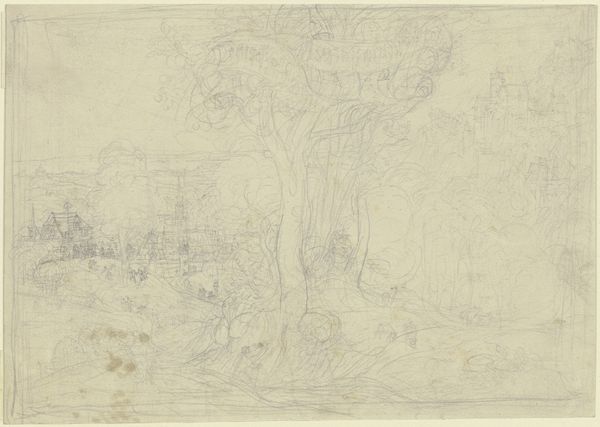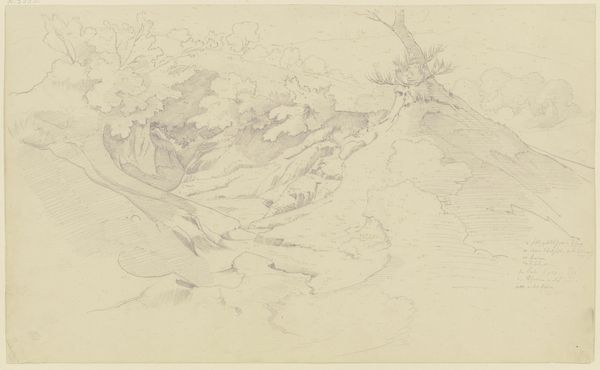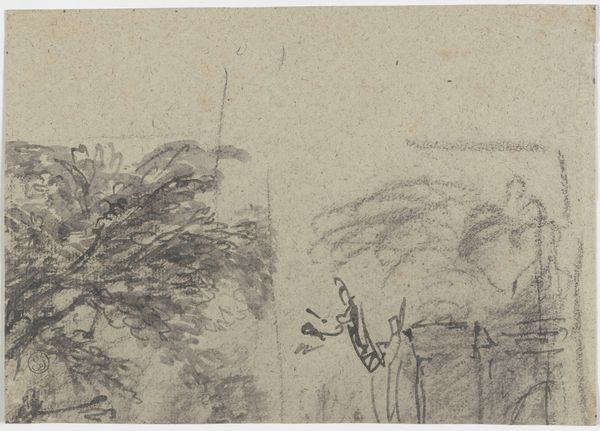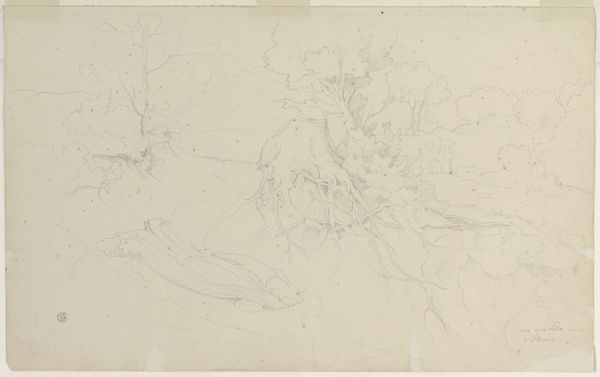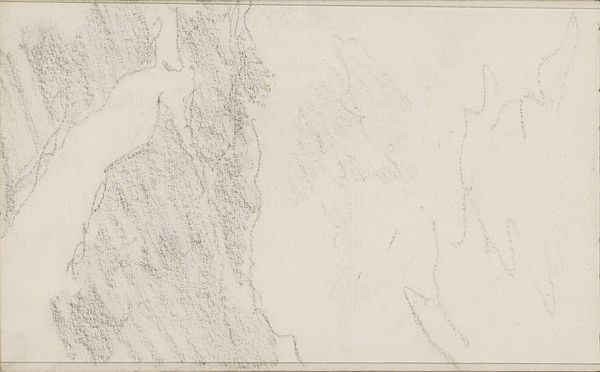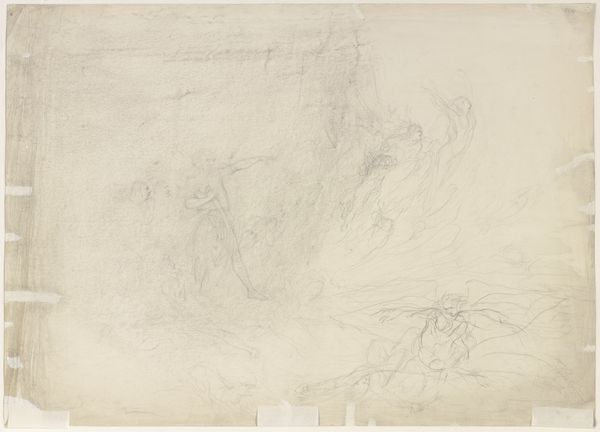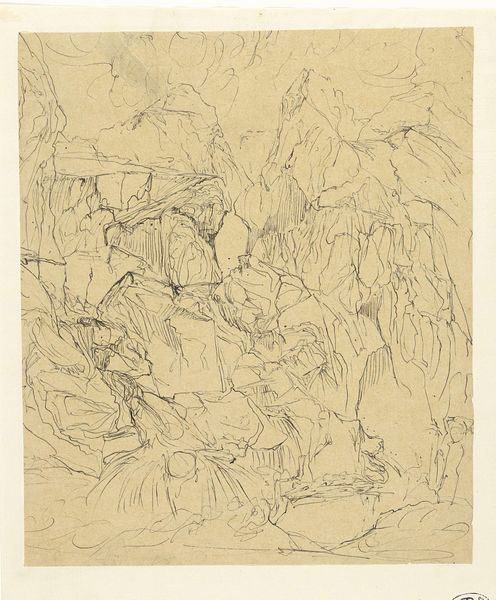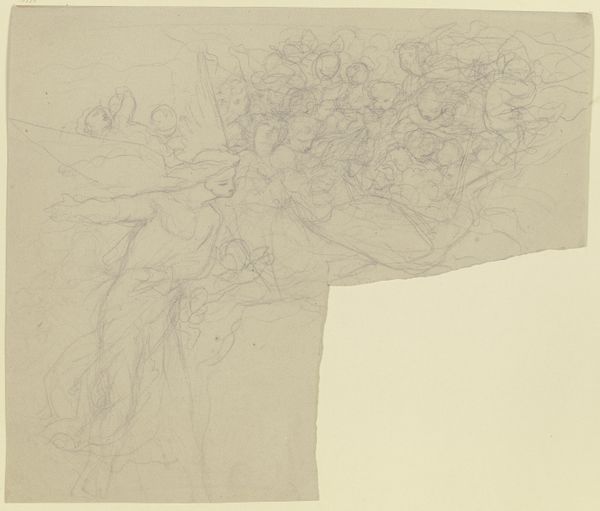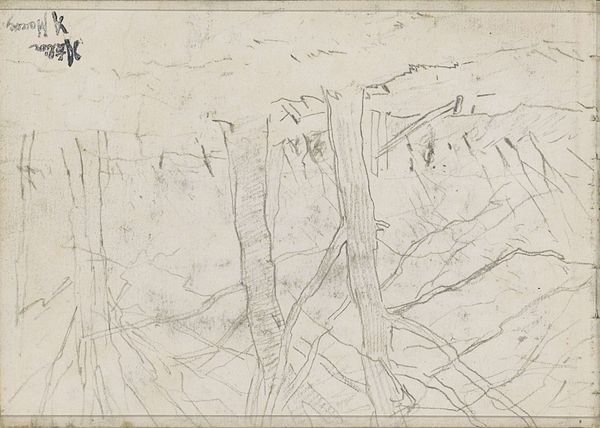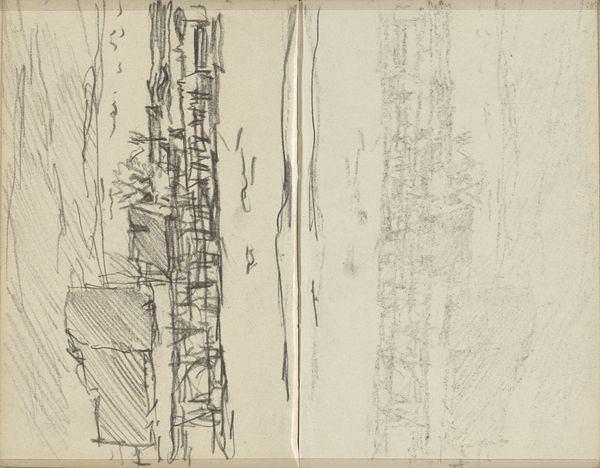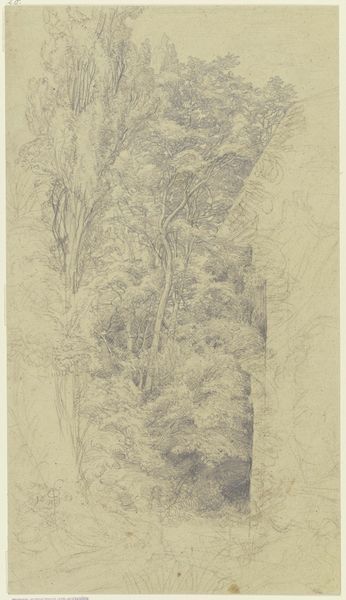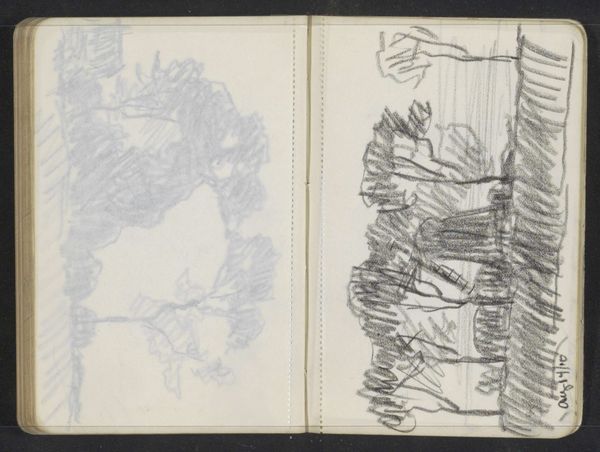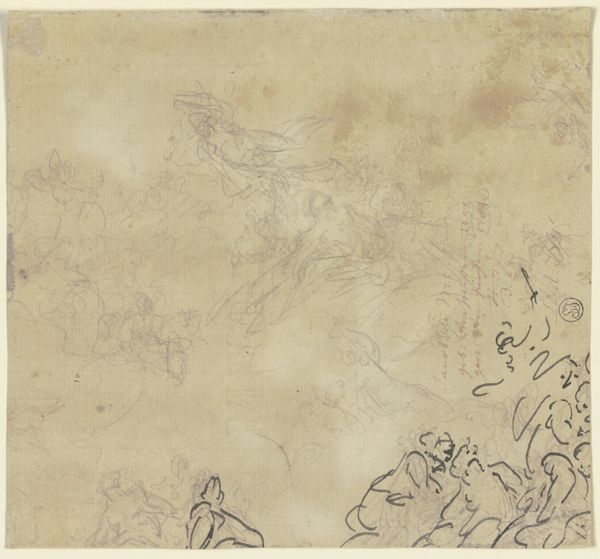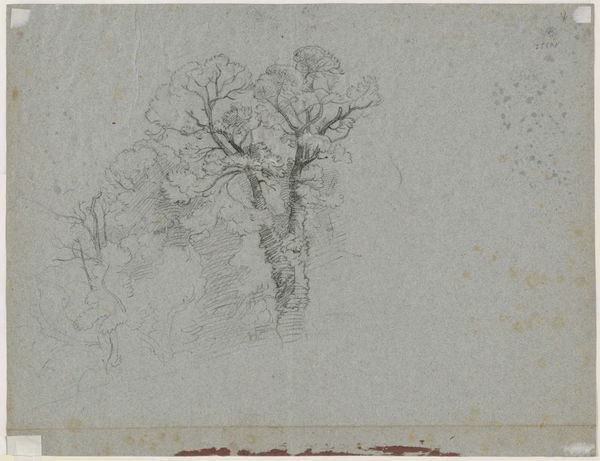
Zwei Landschaften, Waldinneres mit Geröll, Weiden und anderen Bäumen c. 1817 - 1818
0:00
0:00
drawing, pencil, graphite
#
drawing
#
16_19th-century
#
landscape
#
romanticism
#
pencil
#
graphite
Copyright: Public Domain
Curator: This captivating drawing is "Two Landscapes, Forest Interior with Scree, Willows and Other Trees" by Carl Philipp Fohr, dating from around 1817 to 1818. It’s rendered in graphite pencil. Editor: Stark, isn't it? Almost a study in textures more than recognizable forms, at least at first glance. A quiet, austere mood emanates from this work. Curator: I agree. Notice the bifurcated structure—the composition divides into two distinct yet interconnected scenes. On the left, we see the intricate rendering of what appears to be a rocky precipice, sharply defined by Fohr’s linework. The right presents a more tangled vision, suggestive of intertwined trees. Editor: Indeed, the contrasts between the rocky outcrop on the left, which seems more stable, and the wild tangle on the right sets up a visual dialogue, no? Is Fohr commenting on the struggle between permanence and decay? The linear nature of the interwoven limbs on the right give that side almost an illustrative quality that contrasts against the left's realism. Curator: An insightful reading. The textural differentiation reinforces these contrasts. Fohr utilizes a complex layering of lines on the left to define depth and volume within the stone. Whereas on the right, the lines create airy transparency amongst the thicket of trees. Editor: There's also something about the placement of the subject. Note how little horizon line, how little sky there is. We the viewers are *in* the scree, up close and at eye-level. What associations were commonly linked to the forest within the broader cultural imagination in early 19th century Germany? Fairy tales, hidden dangers... This makes one wonder. Curator: Forests, in that period, often embodied spiritual introspection and the sublime. However, in Fohr’s work, that romantic sentiment veers toward realism, an unromantic study of line. See how the density of his technique actually obscures any overt symbolism? It's not about conveying the emotionality of nature, but visually cataloging the details that make up this observed place. Editor: Well put. The piece's subdued quality leaves us with this strange tension. In these "Two Landscapes," the trees take on an emblematic significance that the artist purposefully mutes through stylistic choices. Fohr delivers a rich meditation on visual perception and human affect. Curator: And I appreciate its rigorous approach, avoiding overt emotionalism while giving the viewer space to create an individual understanding.
Comments
No comments
Be the first to comment and join the conversation on the ultimate creative platform.
